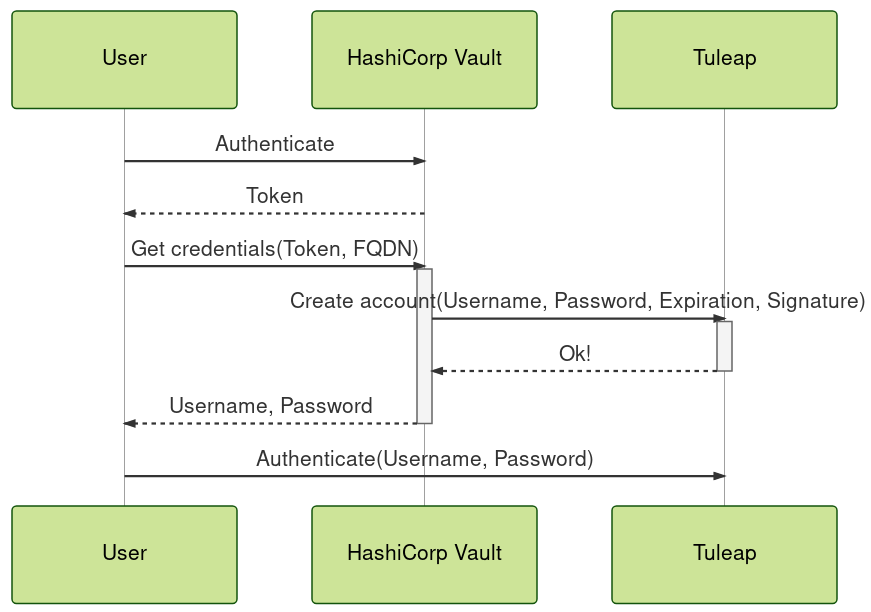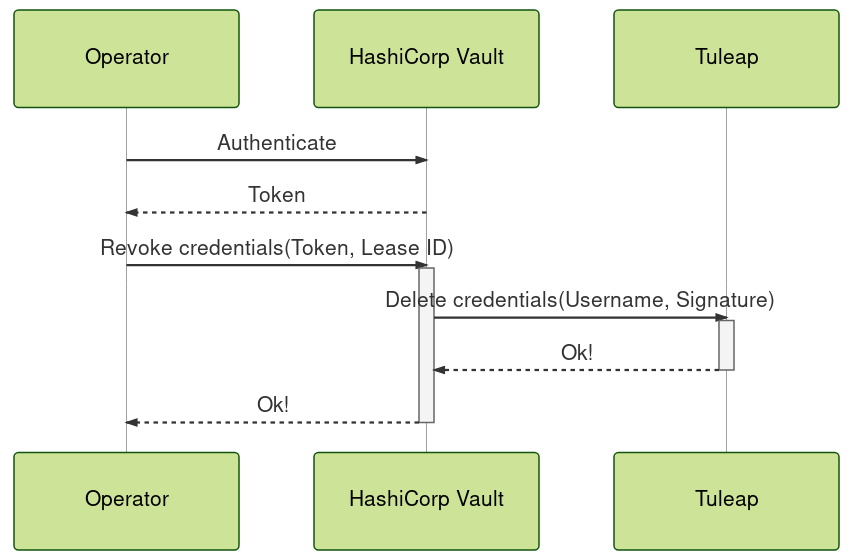Dynamic credentials¶
Attention
This module is part of Tuleap Enterprise. It might not be available on your installation of Tuleap.
The dynamic credentials plugin aims to provide a way to generate short-lived credentials on the fly to access to a Tuleap instance. While it could work with other tools, the plugin is specifically designed to work with HashiCorp Vault.
The goal is to solve the following challenges:
- Non-Repudiation: Credentials are unique per user which makes auditing and finding the source of compromise possible. The need of sharing credentials is removed.
- Impact of a compromise: Since credentials are only valid for a limited period of time, it reduces the risks because they will be revoked automatically.
- Revocation: It is possible to associate each credentials to a specific client. This makes possible to revoke only the impacted credentials in case of a lease.
As of today, the dynamic credentials plugin only allows to create set of credentials associated with a site adminitrator access.
Setup¶
The plugin tuleap-plugin-dynamic-credentials must be installed and enabled
on your Tuleap instance, see Tuleap Plugins installation to learn how to do that.
On your Vault instance, you must install the vault-tuleap-plugin and mount
the secret engine, refer to the
Vault documentation to
learn how to do that. A compiled version of the vault-tuleap-plugin can be
found here.
This document assumes the Tuleap secrets engine is enabled at the tuleap
path in Vault. If that is not the case, please your commands accordingly.
You then need to configure a connection to communicate with a Tuleap instance:
$ vault write tuleap/config/my-tuleap allowed_roles="my-role"
Once the connection is configured, you need to retrieve the public key and set it
in the configuration file of the plugin
/etc/tuleap/plugins/dynamic_credentials/etc/dynamic_credentials.inc on your
Tuleap server:
$ vault read tuleap/config/my-tuleap
Configure a role to map a name in your Vault instance to the host running your Tuleap instance:
$ vault vault write database/roles/my-role \
config_name="my-tuleap" \
allowed_hosts="tuleap.example.com"
You can then request credentials and use them to log in the Tuleap instance:
$ vault write tuleap/creds/my-role host='tuleap.example.com'
How does it work?¶
The following diagram summarizes the communication the user requesting the credentials, the HashiCorp Vault instance and the Tuleap instance:

The following diagram summarizes the communication the user requesting the credentials, the HashiCorp Vault instance and the Tuleap instance:

Authentication of requests coming from HashiCorp Vault to the Tuleap instance relies on Ed25519 base64 encoded signatures. The signed messages are generated the following ways:
- creation request:
<sys_https_host>||username||password||expiration (ISO8601 formatted)- revocation request:
<sys_https_host>||username
The security of the solution relies on the fact that the private key used to sign messages is generated directly in the HashiCorp Vault instance and, under a normal usage, is not known by other parties. The HashiCorp Vault instance is the only party able to generate a valid request accepted by the Tuleap instance. The HashiCorp Vault security model might of interest. For the Tuleap plugin, the usual security model of Tuleap applies.